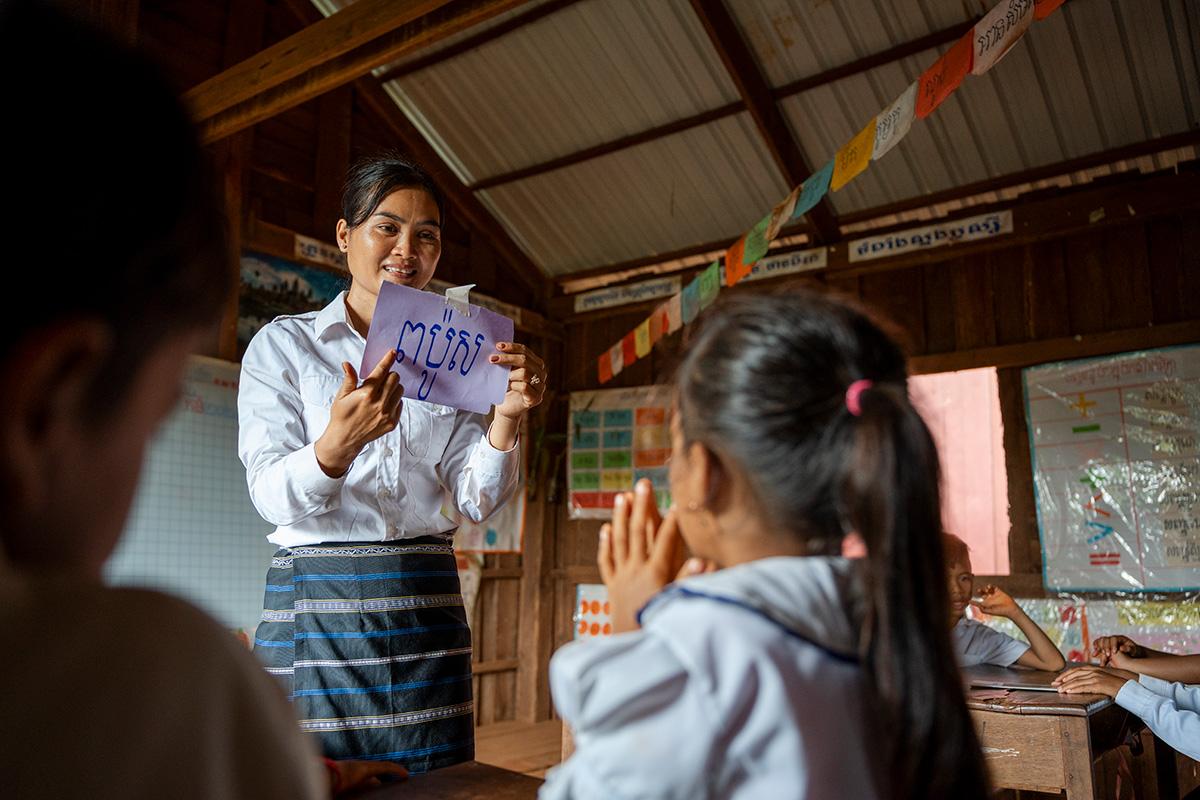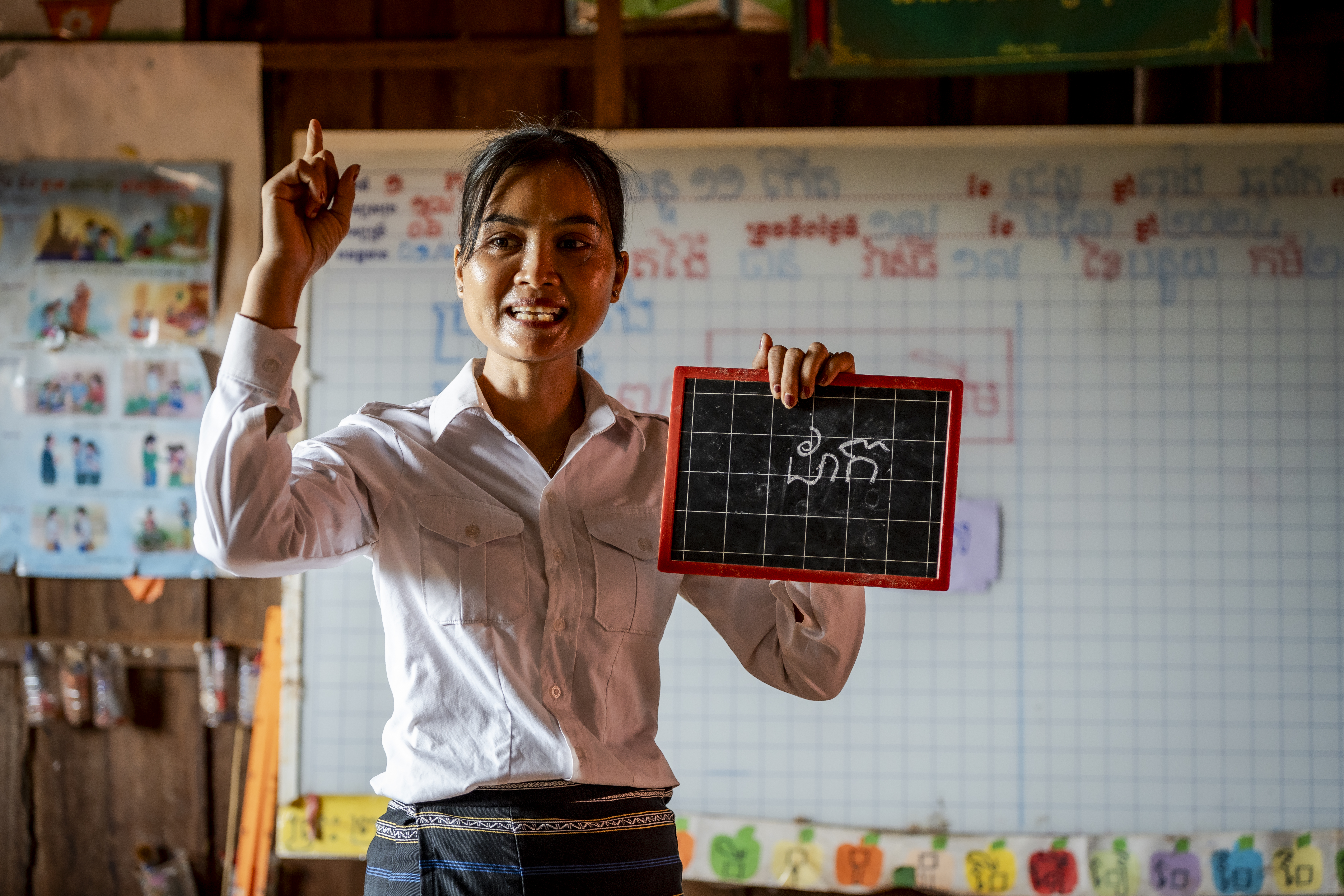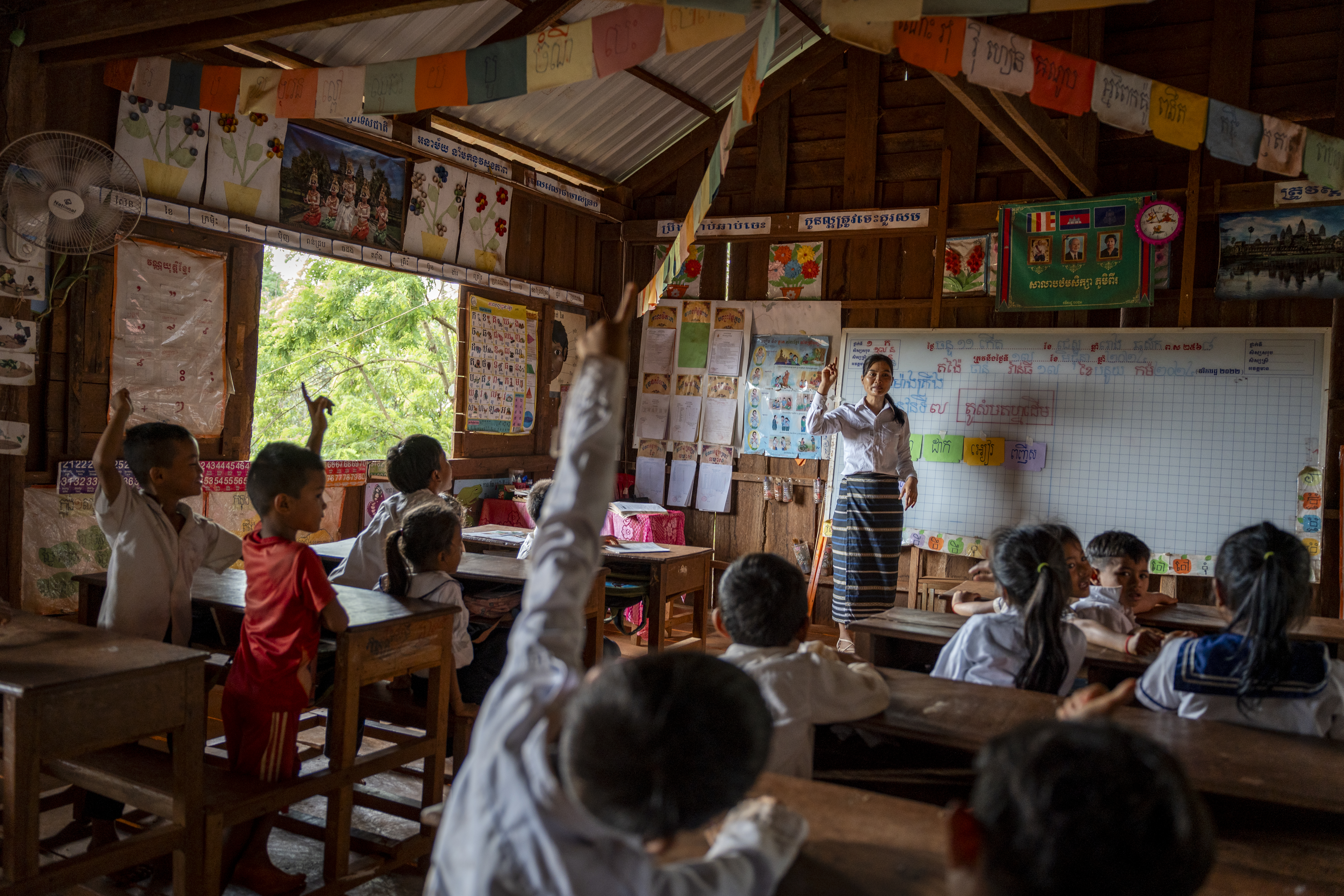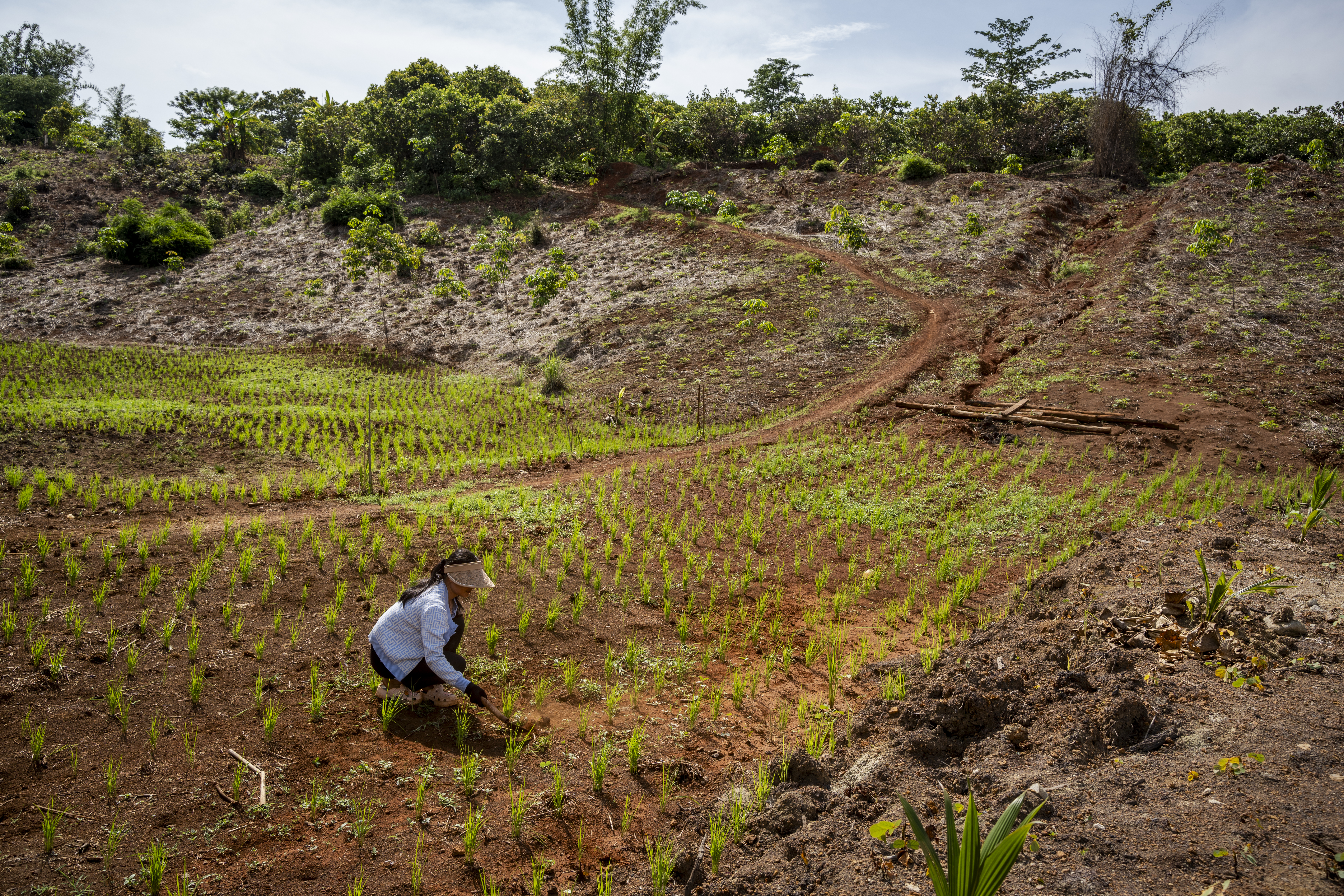In golden and blue, a 33-year-old Multilingual Education (MLE) teacher highlight her traditional clothing as she teaches her first graders in Phum Pi Primary school. The three-classrooms wooden school has been standing strongly since 2007 as an educational home to hundreds of students. Since the school’s establishment, Ngang Bos has been a Kreung Multilingual Education teacher starting early as the community teacher
A series of training courses on capacity building and teaching methods were what a MLE teacher like Ngang Bos received as they continued to develop the curriculums.
At the Northeast part of the country, the red soil Ratanak Kiri is the biggest home to Cambodia’s Indigenous communities. The MLE which marries education with tradition, the young generation of Indigenous communities adopt the learning of both their mother tongues and Khmer curriculums from the first grade to grade 3 in MLE program. A trained teacher like Ngang Bos is among many educators in this field supporting the multi-languages practices.
Skilled with both Khmer and Kreung languages in combination with her teaching methods, her first graders enjoy dictation exercise as she flipped colorful word cards on the white board. Ngang Bos walks around and guides her newest student sitting at the back who is trying to learn along with her peers.




